
James Bowie was a 19th-century American pioneer, slave smuggler and trader, and soldier who played a prominent role in the Texas Revolution. He was among the Americans who died at the Battle of the Alamo. Stories of him as a fighter and frontiersman, both real and fictitious, have made him a legendary figure in Texas history and a folk hero of American culture.

A Bowie knife is a pattern of fixed-blade fighting knife created by Rezin Bowie in the early 19th century for his brother Jim Bowie, who had become famous for his use of a large knife at a duel known as the Sandbar Fight.
James Black was an American knifemaker best known for his improvements to the Bowie knife designed by Jim Bowie.
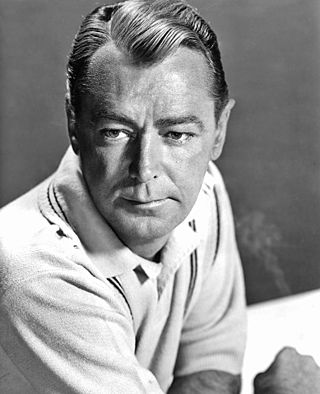
Alan Walbridge Ladd was an American actor and film producer. Ladd found success in film in the 1940s and early 1950s, particularly in films noir and Westerns. He was often paired with Veronica Lake in films noir, such as This Gun for Hire (1942), The Glass Key (1942), and The Blue Dahlia (1946). Whispering Smith (1948) was his first Western and color film, and Shane (1953) was noted for its contributions to the genre. Ladd also appeared in ten films with William Bendix.

Virginia Mayo was an American actress and dancer. She was in a series of popular comedy films with Danny Kaye and was Warner Bros. biggest box-office draw in the late 1940s. She also co-starred in the 1946 Oscar-winning movie The Best Years of Our Lives.
The Sandbar Fight, also known as the Vidalia Sandbar Fight, was a formal one-on-one duel that erupted into a violent brawl involving a number of combatants on September 19, 1827. It took place on a large sandbar in the Mississippi River, a few miles north of Vidalia, Louisiana and Natchez, Mississippi. The fight resulted in the death of General Samuel Cuny and Major Norris Wright. American pioneer and folk hero James Bowie survived but was seriously injured in the fight.
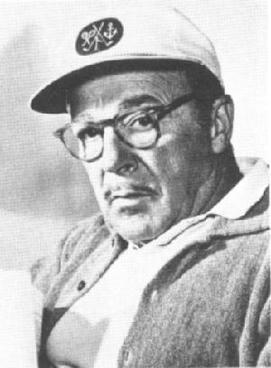
Gordon Douglas Brickner was an American film director and actor, who directed many different genres of films over the course of a five-decade career in motion pictures.
Batjac Productions is an independent film production company co-founded by John Wayne in 1952 as a vehicle for Wayne to both produce and star in movies. The first Batjac production was Big Jim McLain released by Warner Bros. in 1952, and its final film was McQ, in 1974, also distributed by Warner Bros. After John Wayne's death in 1979, his son Michael Wayne owned and managed the company until his own death in 2003, when his wife Gretchen assumed ownership.

The Ladd Company was an American film production company founded by Alan Ladd Jr., Jay Kanter, and Gareth Wigan in 1979.
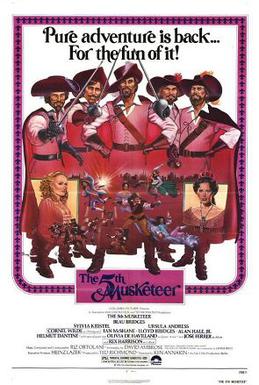
The Fifth Musketeer is a 1979 German-Austrian film adaptation of the last section of the 1847–1850 novel The Vicomte of Bragelonne: Ten Years Later by Alexandre Dumas, père, which is itself based on the French legend of the Man in the Iron Mask. It was released in Europe with the alternative title Behind the Iron Mask.

The Sturdivant Gang was a multi-generational, family gang of counterfeiters, whose criminal activities took place over a fifty-year period, from the 1780s, in Connecticut and Massachusetts, with one branch of the family going to Tennessee via Virginia and a second family branch going to Ohio and finally settled on the Illinois frontier, between the 1810s to 1830s.
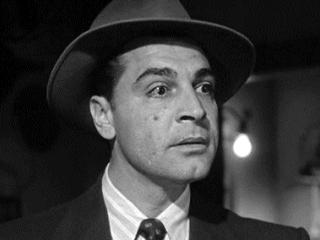
Anthony Caruso was an American character actor in more than one hundred American films, usually playing villains and gangsters, including the first season of Walt Disney's Zorro as Captain Juan Ortega.

Guns of the Timberland is a 1960 American Technicolor lumberjack Western film directed by Robert D. Webb and starring Alan Ladd, Jeanne Crain, Gilbert Roland and Frankie Avalon.
James Ruffin Webb was an American screenwriter. He was best known for writing the screenplay for the film How the West Was Won (1962), which garnered widespread critical acclaim and earned him an Academy Award.

Paul Iselin Wellman was an American journalist, popular history and novel writer, and screenwriter, known for his books of the Wild West: Kansas, Oklahoma, Great Plains. Hollywood movies Cheyenne (1947) with Jane Wyman, The Walls of Jericho (1948) with Kirk Douglas, The Iron Mistress (1952) with Alan Ladd as Jim Bowie, Jubal (1956) with Ernest Borgnine and Rod Steiger, and The Comancheros (1961) with John Wayne and Lee Marvin are based on Wellman novels.

Duel of Champions is a 1961 film about the Roman legend of the Horatii, triplet brothers from Rome who fought a duel against the Curiatii, triplet brothers from Alba Longa in order to determine the outcome of a war between their two nations.

Desert Legion is a 1953 American adventure film directed by Joseph Pevney and starring Alan Ladd.
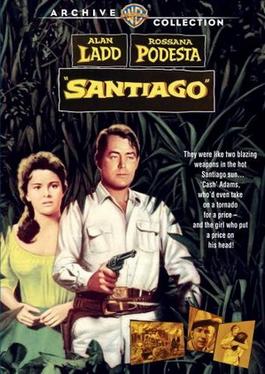
Santiago,is a 1956 American Warnercolor adventure film directed by Gordon Douglas and starring Alan Ladd, Rossana Podestà and Lloyd Nolan. It is set in 1898 Cuba against the background of the Cuban War of Independence. Martin Rackin wrote the screenplay, based on his unpublished novel, as well as producing the film. Ladd also co-produced the film that was made and distributed by Warner Brothers.

The Big Land is a 1957 American Western film in Warnercolor directed by Gordon Douglas and starring Alan Ladd, Virginia Mayo and Edmond O'Brien.

The San Francisco Story is a 1952 American Western film directed by Robert Parrish and starring Joel McCrea and Yvonne De Carlo. The rough and tumble Barbary Coast of San Francisco is recreated with attention to detail, including Florence Bates as a saloon keeper Shanghaiing the unwary. Noir elements include many shadows, a discordant musical score, snappy dialogue, a disabused hero who resists the good fight, and a femme fatale. A schematic but insightful rendering of political corruption, the film is essentially about standing up to bullies.


















